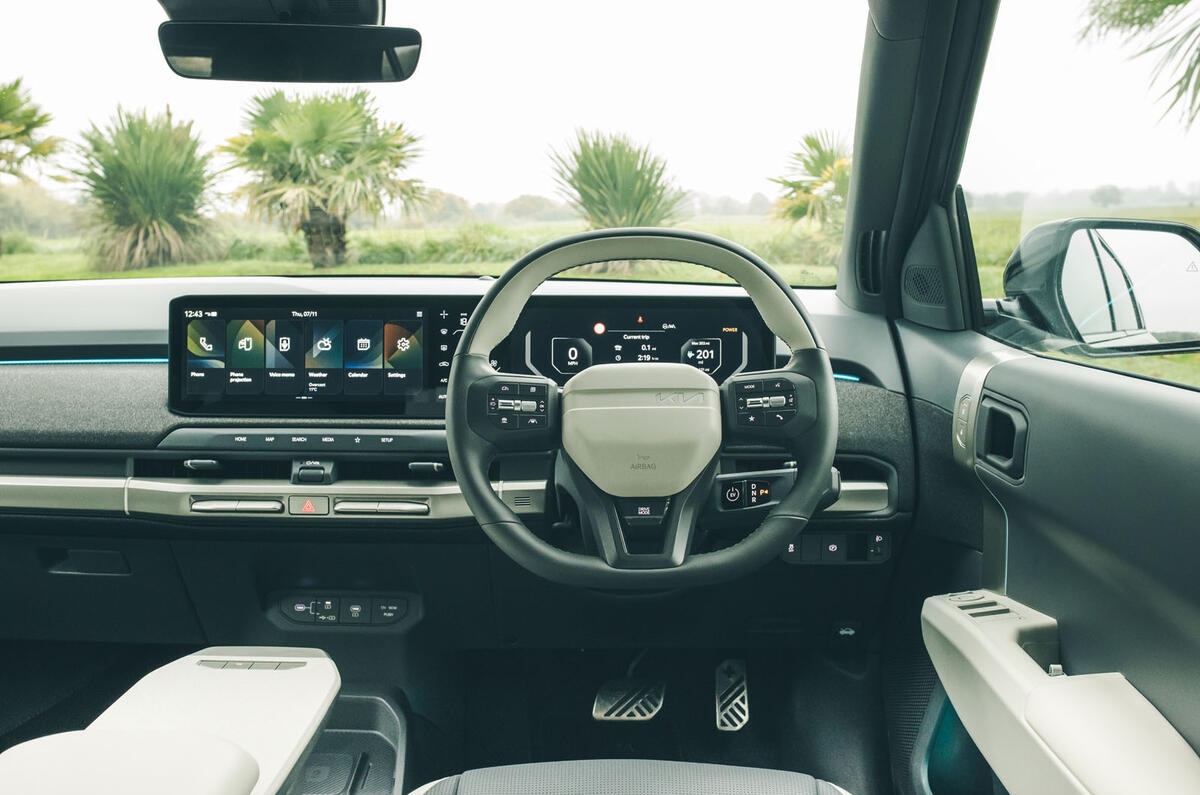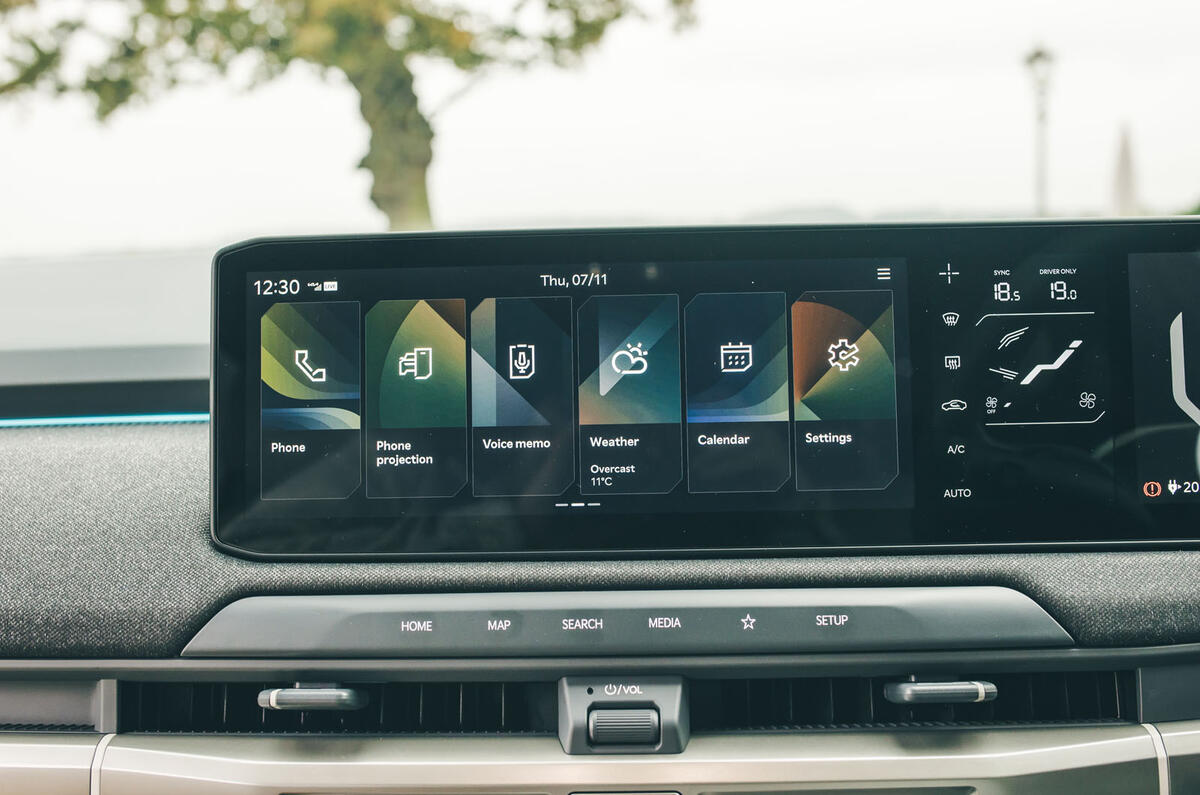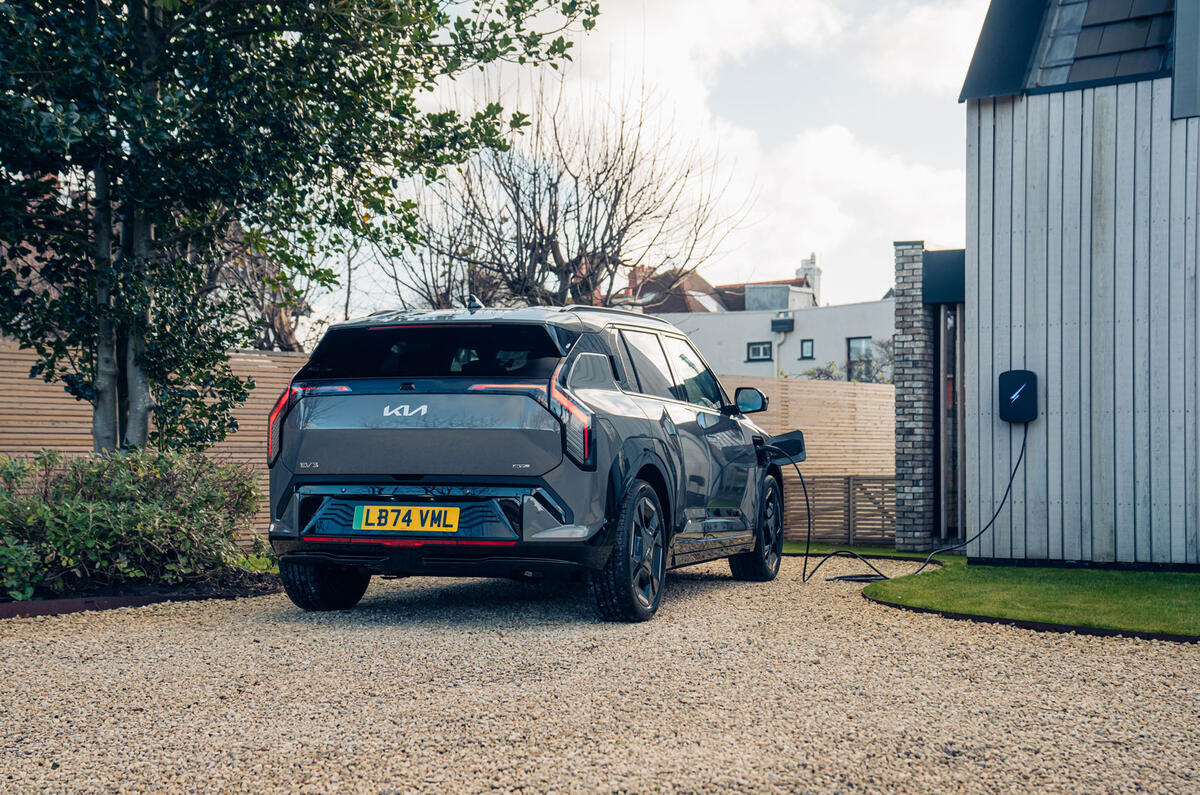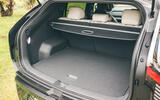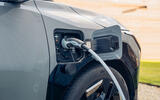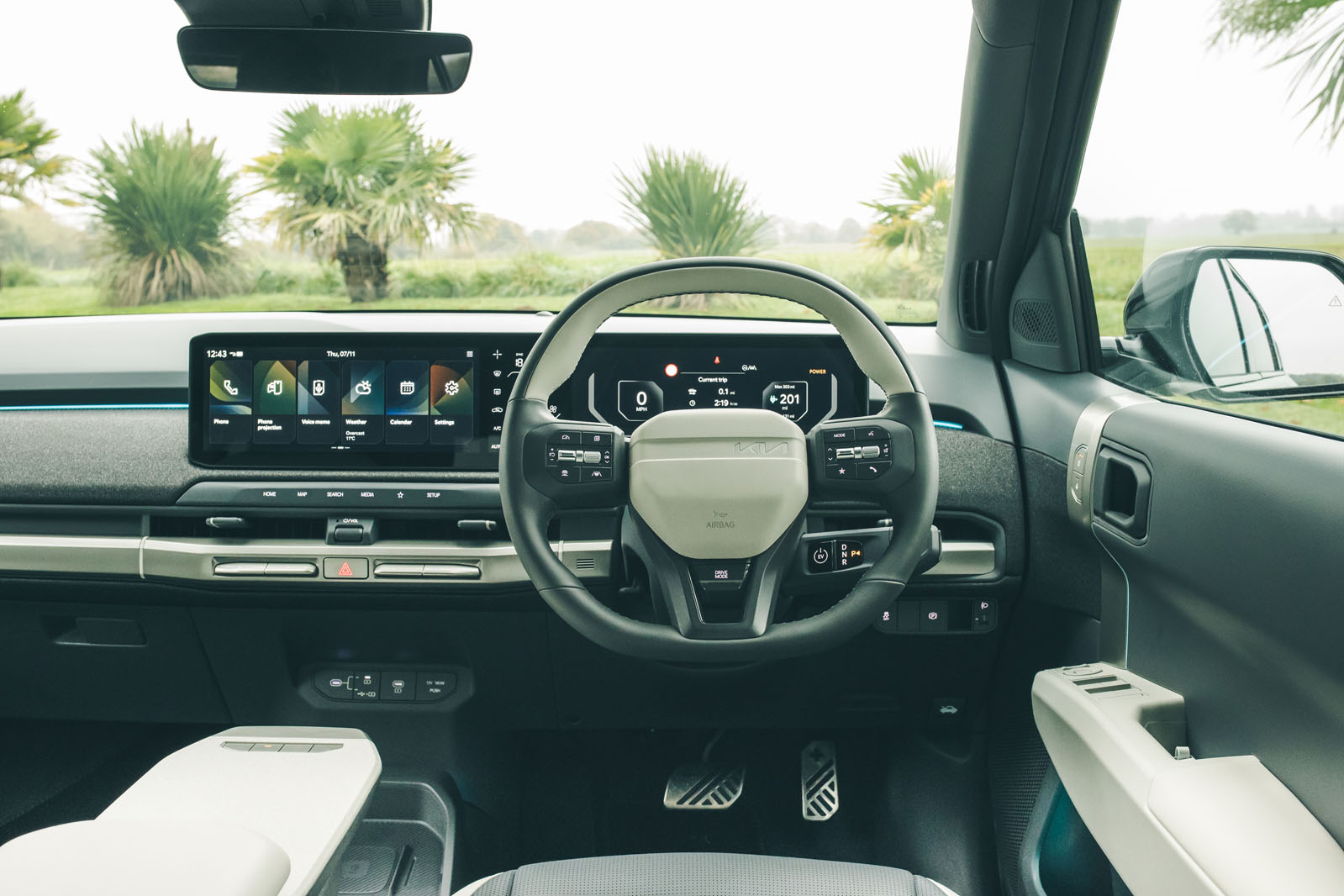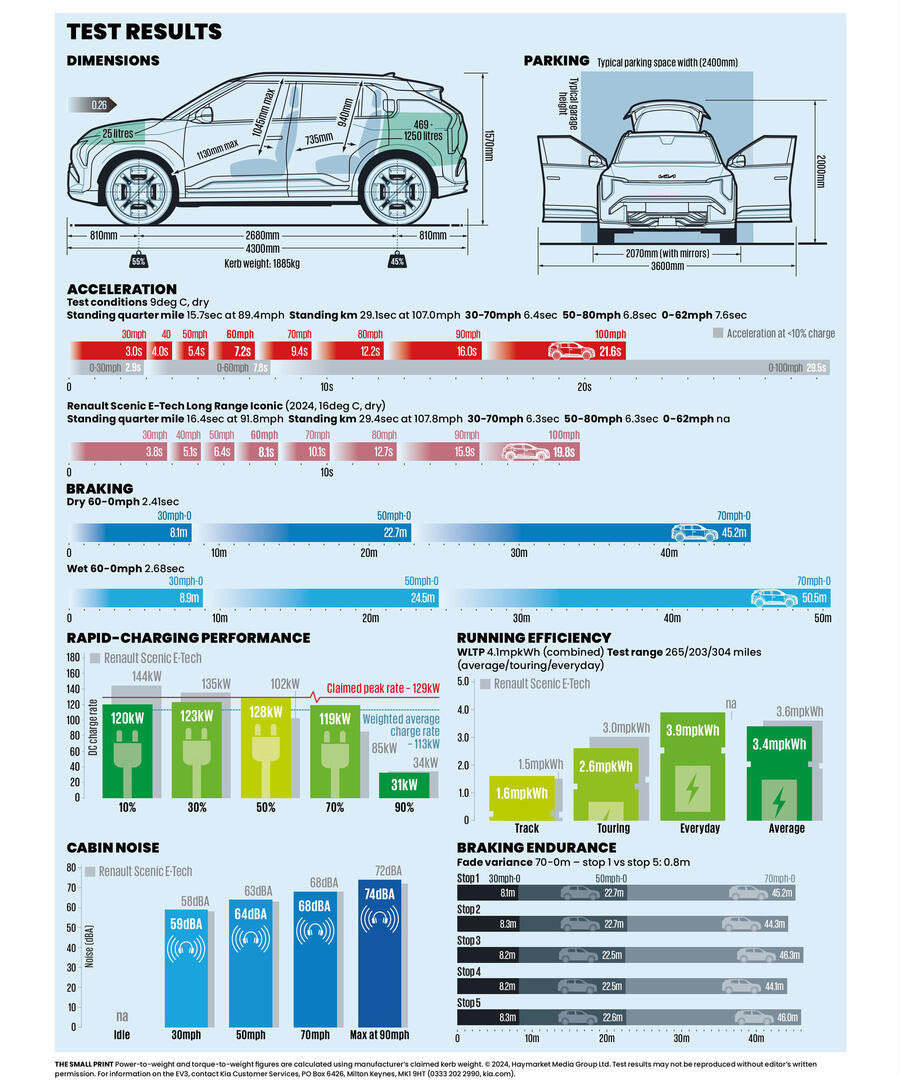Like its exterior, the EV3’s interior follows the lead of big brother EV9. At a glance, it is effectively the same design, just shrunken down. Like so many modern cars, the dashboard is dominated by a large, curved screen that incorporates the digital gauge cluster and the multimedia system. Between the two main parts is a smaller section that’s dedicated to the climate controls, making them permanently and easily accessible.
Below the main screen sits a small but sensibly chosen selection of physical buttons that give you quick access to primary infotainment functions as well as the cabin temperature, fan speed and air distribution. Some are rendered as part of a touch-sensitive section of trim, others come as rocker switches set in an ‘aluminium’ trim strip. Pieces of fabric and the two-tone colour scheme complete the lounge-like ambience.
It’s pretty convincing, with just a few caveats: Kia proudly claims it’s expunging leather from its cars, but in the EV3 it has simply replaced it with a synthetic version, which shows a lack of creativity in the materials department.
You can have cloth seats, but only on Air trim, which also replaces some of the soft mouldings with hard plastic. The Air still has a high-quality cabin with a very generous level of equipment, but it would be a good idea to have a poke around one at a dealership to decide whether you find that trade-off acceptable.
Although the upholstery is disappointing, the seats themselves are very comfortable. In our GT-Line test car, the driver’s side is electrically adjustable and features tilt adjustment and lumbar support. You don’t sit particularly low, and the steering column comes out at a bit of an angle, but there’s no shortage of head room and the driving position is comfortable.
Interior space is undoubtedly impressive. The open, airy cabin provides plenty of storage space, even if the centre console could have been even more practical with a few more bins and shelves. Adults have no shortage of leg room in the back, and thanks to the somewhat high-set front seats, can even put their feet beneath.
A Cupra Born or VW ID 3 has slightly more rear space still, but the Kia compensates with a bigger boot that has a remarkable amount of underfloor storage. One strange lapse: the luggage cover leaves a gap of about 10cm to the rear seatbacks. This would make sense if the rear seat were adjustable, which it isn’t.
Multimedia

Kia’s multimedia system is shared with Hyundai, save for some unique fonts and graphics, and when it’s this good, that’s something to be pleased about. The graphics are crisp and clean, and the screen responds quickly to your inputs. There’s no physical cursor device, but thanks to a sensible menu layout and a good selection of shortcut buttons (including a few customisable ones), you don’t really miss one.
There’s wireless Apple CarPlay and Android Auto, and they’re well integrated into the system. The built-in navigation is clear and has good, up-to-date traffic information, meaning you don’t just default to Google Maps.
Kia’s smartphone app is easy to pair with the car and its core functions work well, letting you remotely monitor and control the charging, send destinations to the navigation and check that the car is still where you left it. Kia Connect (all the car’s networked functions) is free for seven years, whereas many manufacturers offer just a free trial of a few months.










